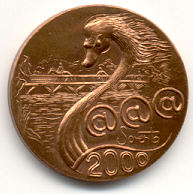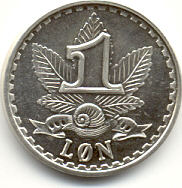 |
 |
| Freetown of Christiania |
 |
||
| The
Free City/Town of Christiania (Fristaden
Christiania)
is
a democratic commune, which is partially self-governing neighborhood in
Copenhagen, Denmark. Founded in 1971 as an alternative society, which was
an offfpring of the Danish counter-cultural movement and the student /
hippie squatters uprisings of the 1960s. The community appropriated some
abandoned military/army barracks because the vacant tract and boarded-up
buildings became an eyesore, and they wanted to convert it into a
playground/park. So they knocked down the fence at the corner of
Prinsessegade and Refshalevej streets and began their anarchistic social
experiment. They pride themselves on not being part of the city, the
country, or the European Union. One of the more influential persons was
Jacob Ludvigsen, who published an anarchist newspaper, which widely
announced the proclamation of the free town. The Freetown's
“entrepreneurs” celebrated the City's 30th birthday on September 26,
2001. One of the commune's website can be viewed at:
http://www.christiania.org/
The neighborhood is accessible only through two main entrances. The people in Christiania have developed their own set of rules, completely independent of the Danish government. Having No cars, No stealing, No Guns, No Bulletproof Vests, and No Hard Drugs. The community rules clearly says that marijuana is cool...but hard drugs (heroin and cocaine) are absolutely forbidden. Famous for its main drag, known as Pusher Street, where hashish (often shortened to hash) was sold openly from permanent stands until January 4, 2004, the stands were finally demolished by the owners themselves (without stopping the hash trade as such, which continued on a person-to-person basis) as a way of persuading the government to allow the Free Town to continue to exist. The region negotiated an arrangement with the Danish defense ministry (which still owns the land) in 1995, and the residents now pay taxes. The future of the area remains in doubt, though, as Danish authorities continue to push for its removal. On Pusher Street, cameras are not allowed, and locals will wave their hands and shout "No photo!" if they see someone trying to take a picture.
|
||
|
Year: 2000 |

|

|
|
Flying hats
Year: 2004 |

|

|
|
If
you're looking for Christiania coins, you can directly contact Vagn
Sorento Dichman (for "Fed" issues) and Ditlev
Nissen (for "Løn" issues). Fed coins were issues in
1976-1977, 1981, 1984-1985, 1988, 1993 and 1997-2006. Klump were issued in
1991 only. Løn were issued in 1997-2008. Christiania also has some anniversary-ralated
medallic and
exonumia, bearing the words "aar" in 1977, "år" in
1981 and 1991. These feature its 06th, 10th and 20th anniversaries
respectively. In
1996 special issues were also made to celebrate their 25th
anniversary. Some NEMO known as HEMP tokens are also believe to be produced
around 1985.
Images of Christiania’s entire output of coinage can be viewed at Mr. Chaim Dov Shiboleth's private
collection, at his website, which was created after his long struggle of
research: |
||
| Micro-Nations | ||
| Chiefa Coins | ||